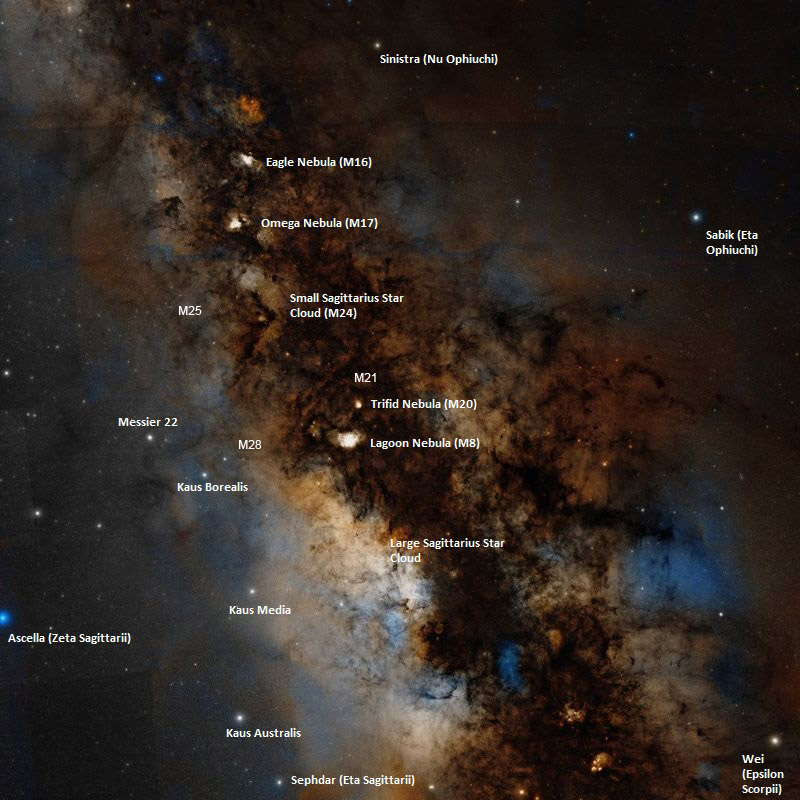
M24 Small Sagittarius Star Cloud (IC 4715)
Apparent Magnitude: 4.6
Distance: Aprox: 10,000 light-years
Constellation: Sagittarius
Star Count Aprox: Too many to count
Diameter: 600 light-years
Messier 24 lies in the Sagittarius Arm of our galaxy, the next inner spiral arm to our own. It occupies an area 90 arc minutes in apparent diameter and contains different types of objects, including stars and clusters that lie at a distance of 10,000 to 16,000 light years from Earth, which gives the cloud a significant depth. In the night sky, the star cloud appears about nine times larger than the full Moon. Messier 24 is the densest concentration of individual stars that can be seen in binoculars. About 1,000 stars are visible in a single field of view. The star cloud is best seen in binoculars and telescopes with a field of view of at least 2 degrees, at low magnification.
Messier 24 contains NGC 6603, a faint open cluster of about 30 stars, located in the brightest region of the star cloud. Messier 24 is sometimes called the Small Sagittarius Star Cloud, to distinguish it from the Large Sagittarius Star Cloud, which lies further to the south and consists of stars in the galactic bulge that are not obscured by interstellar dust.
The Sagittarius Star Cloud contains several dark nebulae which are easy to observe because of the bright background that M24 provides. The most prominent of these is Barnard 92, an oval-shaped dark nebula stretching across a quarter of a degree in the northwestern part of M24. Barnard 92 got the nickname the Black Hole before the term started to be used for black holes as we know them now.

Taken 7/7/18 in Grand Rapids, Ohio by Russell Kille on a CPC 1100 with Hyperstar @ F2 and ZWO ASI294MC Pro camera